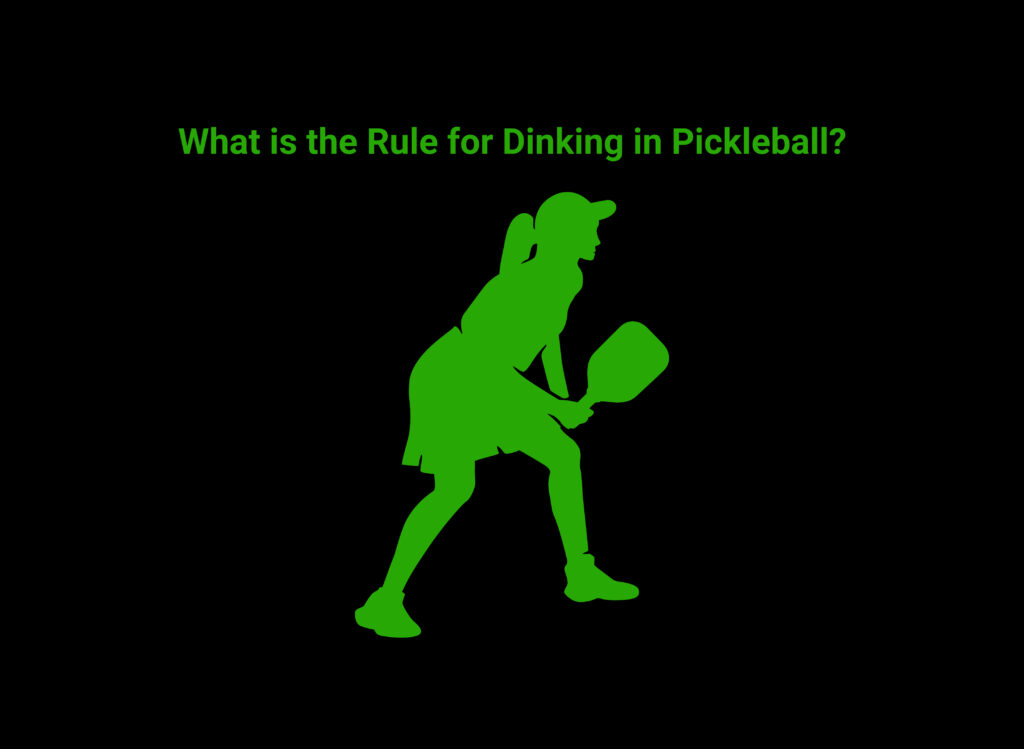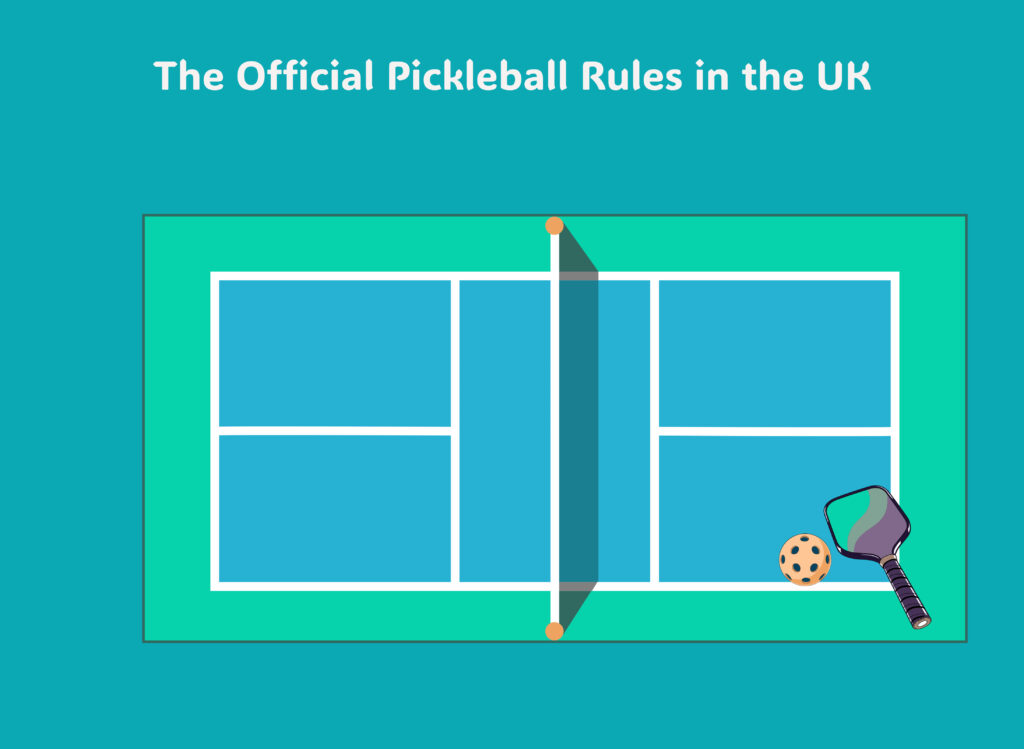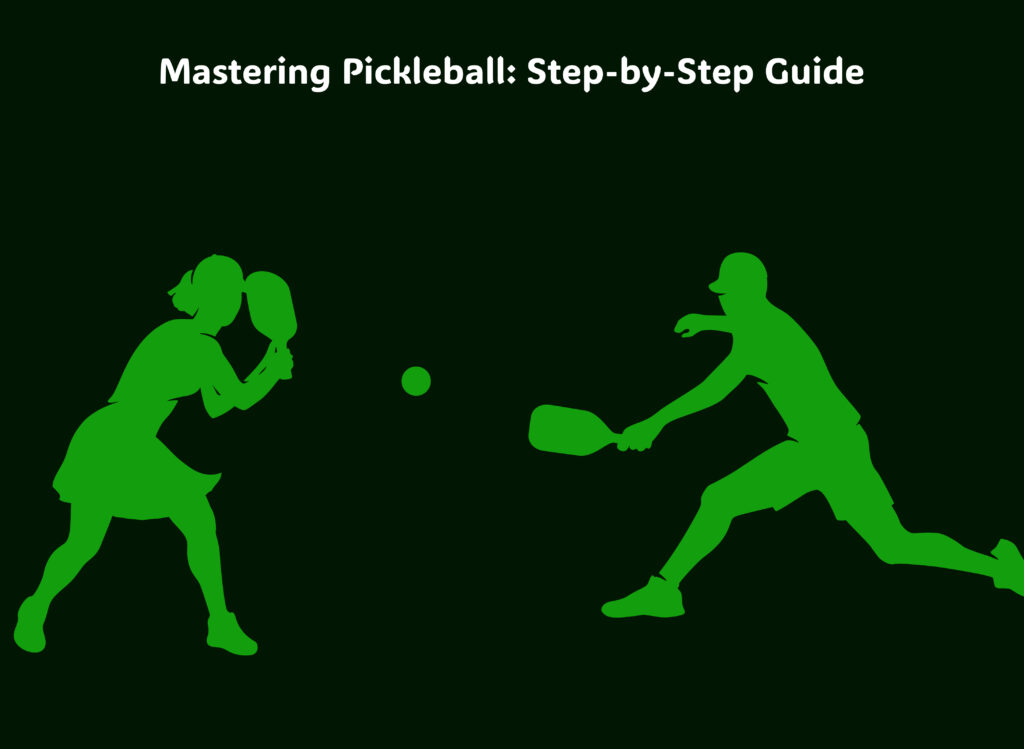- Introduction: Pickleball Dinking Rules
- The Non-Volley Zone Rule and Its Impact on Dinking
- How Beginners Should Approach Dinking (Without Breaking the Rules)
- Why Dinking Dominates Intermediate Play in the UK
- Advanced Dinking: Precision, Pressure, and Rule Mastery
- Final Thoughts: Dinking Legally and Effectively in UK Pickleball
Introduction: Pickleball Dinking Rules
One of the key rules for dinking is that it must obey the Kitchen regulations. If you are standing inside the Kitchen, or on the Kitchen line, you may only hit a dink after the ball has bounced. You cannot volley a dink (or any shot) while touching or being inside the Kitchen zone. This makes foot placement and timing absolutely crucial.
In pickleball, dinking is a soft, strategic shot played from or near the non-volley zone (Kitchen) that lands gently into the opponent’s Kitchen. It’s one of the most important elements of advanced play, especially in doubles, where soft hands, patience, and court control matter more than brute power. But dinking isn’t just about finesse—it’s also subject to specific rules that define where, how, and when it can be played.
Dinking is legal from anywhere on the court, but it’s most effective when executed just behind the Kitchen line. Players use dinks to reset the pace, draw opponents into the net, or set up attacking opportunities. In UK pickleball clubs, dinking is often the first advanced shot taught after the basic serve and return, because it embodies the sport’s strategic essence. Understanding the rule—and how to follow it without committing faults—is vital for progressing as a player.
The Non-Volley Zone Rule and Its Impact on Dinking
The non-volley zone (commonly known as the Kitchen) is the defining area for dinking. The Kitchen rule states that a player may not volley the ball while standing in the Kitchen. A volley is a shot hit out of the air before it bounces. Since most dinks occur low and close to the net, the temptation to reach in and volley them is high—but unless the ball has bounced, you must stay out of the Kitchen.
Key applications of the Kitchen rule in dinking:
✔ You can step into the Kitchen to hit a dink only if the ball has bounced.
✔ You cannot volley a dink while touching the Kitchen line or stepping inside.
✔ After hitting a dink inside the Kitchen, you must re-establish both feet outside before volleying again.
✔ If your momentum carries you into the Kitchen after a volley—even after the ball is struck—it’s a fault.
These rules make dinking not just a test of soft hands, but also of footwork and discipline. In the UK, where indoor courts can be tight and the pace fast, it’s easy to forget where your feet are. Practising your dink footwork and learning to stop before the line helps you avoid avoidable errors and maintain legal positioning.
🔥 Key takeaway: Dinking is legal from anywhere on the court—but if you’re in the Kitchen, the ball must bounce first before you hit it.
How Beginners Should Approach Dinking (Without Breaking the Rules)
For new players, dinking can feel awkward. It’s not the fast, satisfying shot you expect when picking up a paddle—it’s slow, deliberate, and strategic. But it’s also one of the most rewarding skills to develop. And learning to dink properly from the start—including understanding the Kitchen rules—helps avoid bad habits down the line.
Beginner do’s and don’ts for dinking:
✅ Do stand just behind the Kitchen line, with toes out of bounds, so you can lean in safely.
✅ Do wait for the bounce before stepping into the Kitchen to hit a dink.
✅ Don’t volley dinks inside the Kitchen, even if you think you’ll win the point. It’s a fault.
✅ Do use a soft grip and relaxed wrist, allowing the paddle to do the work.
✅ Do keep your knees bent and paddle low—it’s easier to control dinks when you stay grounded.
In UK beginner clubs, dinking drills are often introduced early to teach control over aggression. Rather than going for smashes, players are encouraged to get comfortable with dink rallies, trading soft shots across the net and focusing on placement over power. This not only builds better technique but helps players naturally absorb the Kitchen rule through repetition.
🔥 Key takeaway: Beginners can dink safely and legally by staying out of the Kitchen during volleys and only stepping in after a bounce.
Why Dinking Dominates Intermediate Play in the UK
At the intermediate level, dinking becomes a battleground of patience, accuracy, and court IQ. Players no longer just use dinks to reset the point—they use them to wear down opponents, force awkward footwork, and create opportunities for an aggressive follow-up. But to be effective, these dinks must always follow the Kitchen rule.
Intermediate players often push the boundaries of the Kitchen. They hover just outside the line, reaching forward to dink with tight angles and soft hands. They understand that one illegal volley or step inside the Kitchen can give away a critical point in a close match. Matches at this level are often won not by flashy winners, but by fewer faults—and Kitchen violations are one of the easiest mistakes to make under pressure.
Dinking also begins to evolve here. Players introduce cross-court dinks, spin dinks, and rolling dinks, each with its own nuance. Footwork becomes more dynamic as players move side-to-side across the Kitchen line, staying just clear of stepping in while still applying pressure.
🔥 Key takeaway: Intermediate players thrive by combining smart dinking with disciplined Kitchen awareness—minimising errors while maximising placement.
Advanced Dinking: Precision, Pressure, and Rule Mastery
At the advanced level, dinking turns from a defensive move into an offensive weapon. It’s no longer just about getting the ball into the Kitchen—it’s about putting it exactly where your opponent doesn’t want it, with angles, pace changes, and pressure. And all of this must still be done within the strict confines of the Kitchen rules.
Advanced players master the art of dinking on the edge—barely skimming the net, clipping the sideline, and making their opponents stretch and stumble. They use deceptive paddle angles and spin to disguise their intent, all while maintaining perfect legal positioning. Their footwork is clean, balanced, and efficient—rarely will you see an elite player commit a foot fault while dinking.
In UK tournaments and league play, high-level dinking duels can stretch for 15–20 shots, with both teams probing for the tiniest opening. One illegal volley or misstep into the Kitchen is all it takes to turn the rally. That’s why the best players treat dinking like chess—thinking two or three moves ahead, using rules to their advantage, and drawing errors rather than forcing winners.
🔥 Key takeaway: At elite levels, dinking becomes a tactical assault—a test of rule knowledge, shot variety, and mental resilience.
Final Thoughts: Dinking Legally and Effectively in UK Pickleball
Dinking in pickleball is a skill that transcends all levels—but it only works if you respect the non-volley zone rules. Whether you’re just learning how to play or competing in a fast-paced UK doubles league, knowing when you can legally dink—and when you must hold back—is crucial for both consistency and credibility on the court.
Key Takeaways:
✔ Dinking is a soft shot intended to land in the opponent’s Kitchen.
✔ It’s legal only if you hit it after the bounce while in the Kitchen.
✔ Volleys from inside the Kitchen (or touching the line) are faults.
✔ Proper dinking involves soft hands, balance, and strict foot placement.
✔ As players progress, dinking becomes an offensive tool—but the rules never change.

Enjoy
10% Off Paddles
👀 Enjoyed this read? Fancy levelling up your game even more? Keep reading Dink Quest for the best pickleball tips, drills, and news in the UK!
🎯 Check out these popular posts next:
📬 Subscribe to the Dink Quest newsletter to Stay in the Loop and be the first to get new blog posts, UK pickleball news, tips, player spotlights and exclusive offers
👉 Click here to subscribe now
Get discounts and exclusive offers for Paddles, clothing and accessories from our shop
We’ve got plenty more where that came from! Whether you’re working on your third shot drop, curious about dinking strategies, or just figuring out how to hold your paddle without it flying across the court we’ve got you covered.
👉 Keep reading, keep learning, and keep dinking smart. Let’s grow the game together, one dink at a time. 💚
See you on the court!
The Dinkquest Team UK 🏓



